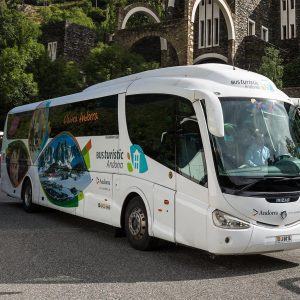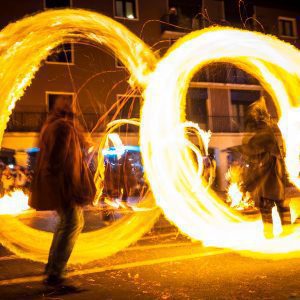This thousand-year-old culture can be seen and felt in the many examples of Romanesque art that dot the country. The museums, art and traditions also provide insight to the history and way of life of the people and institutions of these valleys. La Casa de la Vall, which has housed the Andorran parliament for centuries, and the sculpture entitled “7 Poetes” by Jaume Plensa, which sits close to this institutional headquarters, display both the past and the present of Andorra. Not to be forgotten is the Sanctuary of Meritxell, which was built by architect Ricardo Bofill after the 1972 fire that burnt down the Romanesque church of Mare de Déu de Meritxell, the patron saint of Andorra.
Andorra has more than 40 Romanesque churches and monuments, making the country a genuine open-air museum of unique sites. Together, they afford insight to the way of life and the local character of the people of these places, where the churches were often more than mere places of worship, serving as sites of social gathering and community.
To discover Andorra’s Romanesque art, there is no better place than the new Espai Columba, a cultural site that houses, preserves and displays the mural paintings of the apse of the Church of Santa Coloma, which is located just steps away. What’s more, this is the ideal place to raise awareness of Romanesque painting in Andorra, not to mention the site’s architecture and other forms of Romanesque art. For more information, visit www.museus.ad or www.cultura.ad.
Medieval bridges like the Pont de la Tosca, Pont de Sant Antoni de la Grella, Pont de la Margineda and the Pont d’Ordino, and the Romanesque churches of Sant Miquel d’Engolasters, Sant Joan de Caselles, Sant Martí de Nagol and Sant Martí de la Cortinada comprise an extensive list of very well conserved architectural works that house original paintings, austere details of the time and altarpieces of later styles. One church worthy of note is that of Sant Vicenç d’Enclar, which can only be accessed on foot. This temple once formed part of a fortified settlement, with a defence tower and vestiges dating back to the Visigothic era. For their part, the churches of Sant Vicenç d’Enclar and Santa Coloma are the only two churches with round bell towers. The latter of the two offers a video-mapping display that provides a virtual reconstruction of the mural paintings that once covered much of the interior.
Andorra has the highest number of museums per inhabitant in the world, covering many different themes. Some bring to light the traditional life of the rural world, while others display collections of miniatures, motorbikes, comics, vintage vehicles, perfumes, religious art, the world of tobacco and the postal system of the past. And then there are still others, such as the Museum of Electricity, the Carmen Thyssen Museum and interpretation centres including the Serradora i Mola de Cal Pal, in La Cortinada, and the Farga Rossell centre, formerly a forge, in La Massana. A wide array, indeed.
If you wish to visit any of the nearby museums immediately following your time at the illa Carlemany shopping centre, you need only cross the street of Avinguda Carlemany and you will find the Perfume Museum. If you follow the avenue up a short way, you will come to the Escaldes-Engordany Art Centre (CAEE), the Carmen Thyssen Museum and just a bit further on, the Exhibition Hall of the local government, which is known as ArtAlRoc, and the Museu de l’Aigua (Water Museum).
If you would like to submerge yourself in the art, architecture and popular culture of Andorra, we recommend you visit www.museus.ad or www.visitandorra.com, where you will find information and links to other institutions and all the services that they offer.
*The bell tower of San Miguel de Engolasters. Author: JA Aguareles. Image provided by the Museums and Monuments Area of the Ministry of Culture, Youth and Sports of the Government of Andorra.



